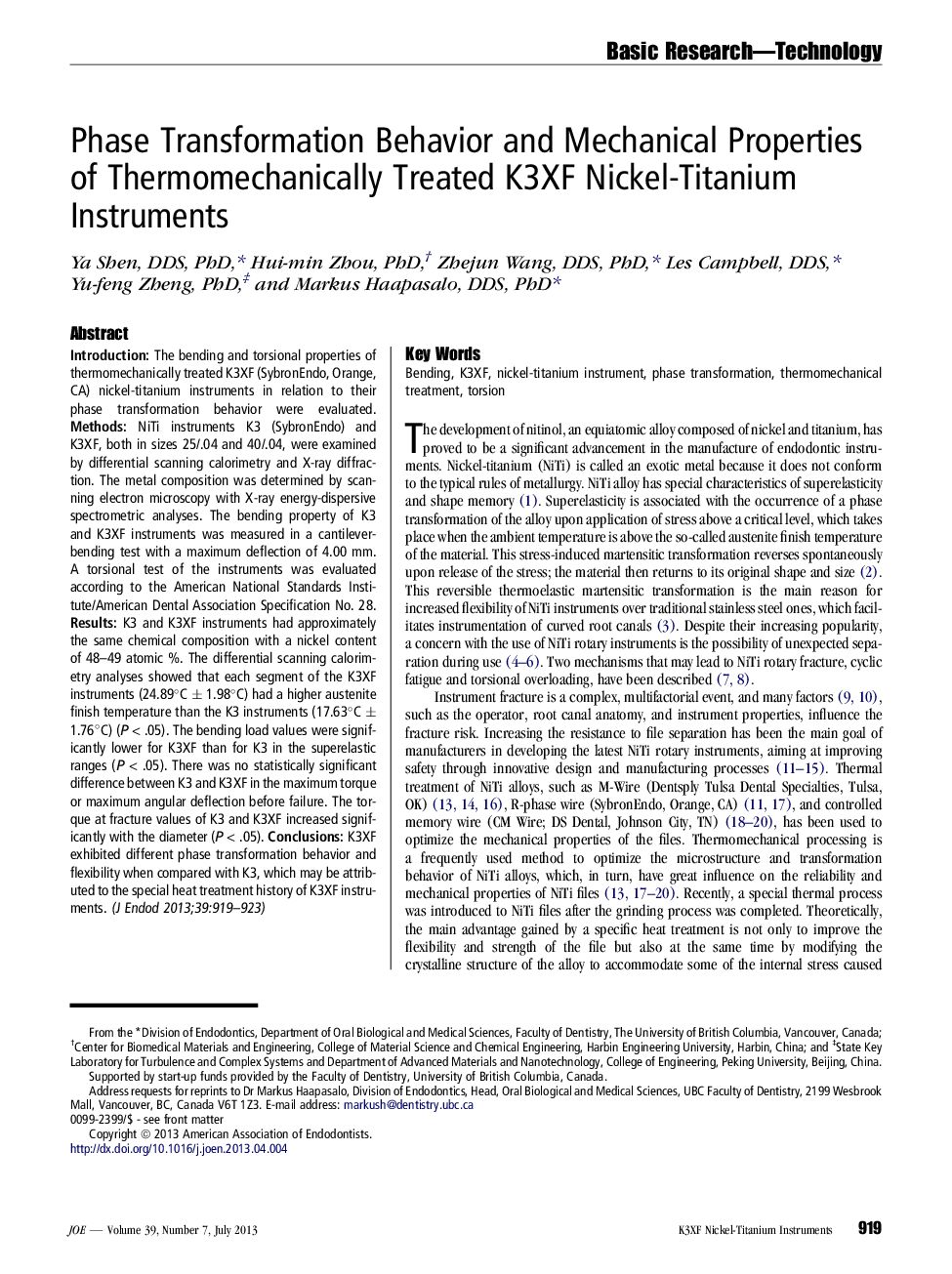| Article ID | Journal | Published Year | Pages | File Type |
|---|---|---|---|---|
| 3150392 | Journal of Endodontics | 2013 | 5 Pages |
IntroductionThe bending and torsional properties of thermomechanically treated K3XF (SybronEndo, Orange, CA) nickel-titanium instruments in relation to their phase transformation behavior were evaluated.MethodsNiTi instruments K3 (SybronEndo) and K3XF, both in sizes 25/.04 and 40/.04, were examined by differential scanning calorimetry and X-ray diffraction. The metal composition was determined by scanning electron microscopy with X-ray energy-dispersive spectrometric analyses. The bending property of K3 and K3XF instruments was measured in a cantilever-bending test with a maximum deflection of 4.00 mm. A torsional test of the instruments was evaluated according to the American National Standards Institute/American Dental Association Specification No. 28.ResultsK3 and K3XF instruments had approximately the same chemical composition with a nickel content of 48–49 atomic %. The differential scanning calorimetry analyses showed that each segment of the K3XF instruments (24.89°C ± 1.98°C) had a higher austenite finish temperature than the K3 instruments (17.63°C ± 1.76°C) (P < .05). The bending load values were significantly lower for K3XF than for K3 in the superelastic ranges (P < .05). There was no statistically significant difference between K3 and K3XF in the maximum torque or maximum angular deflection before failure. The torque at fracture values of K3 and K3XF increased significantly with the diameter (P < .05).ConclusionsK3XF exhibited different phase transformation behavior and flexibility when compared with K3, which may be attributed to the special heat treatment history of K3XF instruments.
